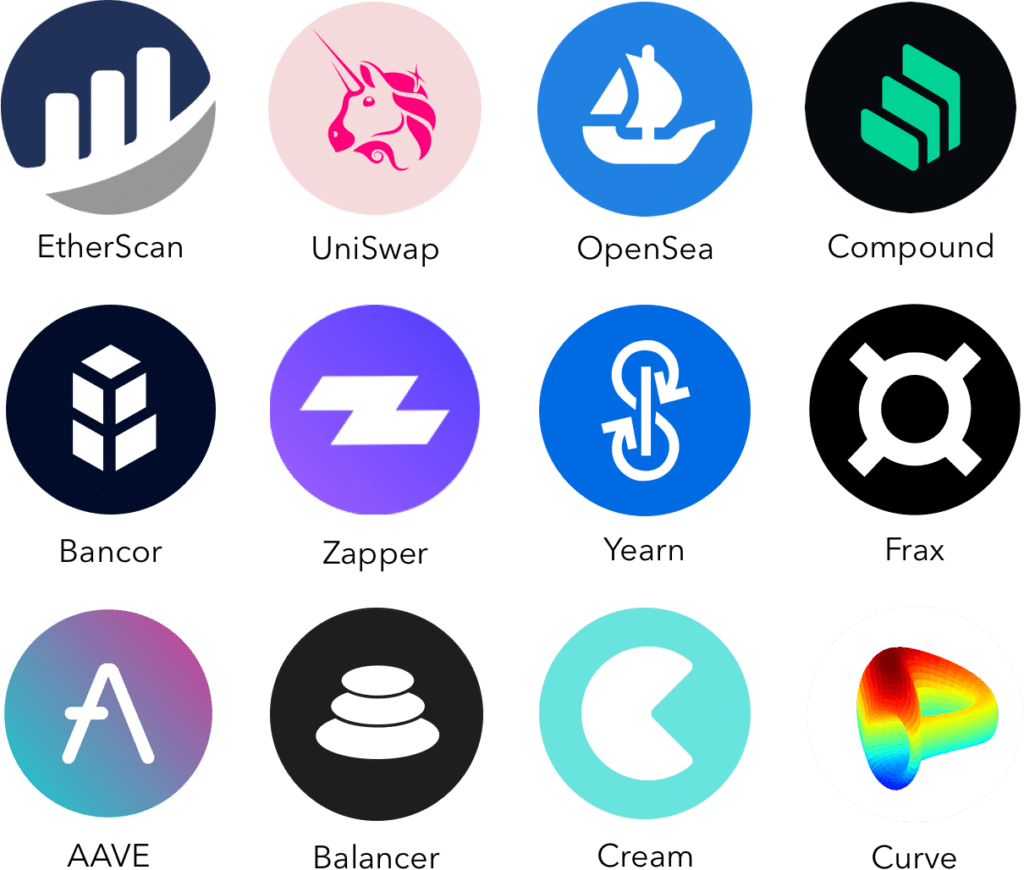Web3 can refer to a set of technologies, services, or concepts that cross multiple levels of abstraction; therefore, its meaning can vary widely depending on who you talk to.
At the basic level, Web3 refers to a standard and its libraries. These enable the interaction between applications and smart contracts and blockchains (e.g., web3.js, ether.js, etc.).

At the next level, Web3 can refer to applications that the foundational standard enables (e.g., MetaMask, UniSwap, AAVE, OpenSea, etc.).
Finally, Web3 may also refer to the socio-economic effects of the applications that apply these new technologies (e.g., disintermediation of financial services, allowing direct investments, peer-to-peer exchange of ownership, etc.).
Depending on someone’s background, they will likely restrict their focus on what Web3 is to one of these levels. However, such restrictions will inevitably lead to overestimating or underestimating Web3’s real impact and potential.
Web3 – Foundation
At the core technological level, Web3 is just a set of definitions that allow applications to interact with blockchains and smart contracts.
One of the most impactful applications of these definitions is the extension of Web browsers’ ability to read and write to blockchains and operate smart contracts/dApps.

In addition to interacting with blockchains and smart contracts, these libraries allow applications/users to create and reuse identities at will.
Web3 – Applications
The Web3 standard enables communications between applications and blockchains.
One widespread implementation of this standard that enables Web applications (wApps) to interact with blockchains and smart contracts is MetaMask.

MetaMask lets a Web browser generate identities (i.e., private & public key pairs), sign messages, perform transactions, read and write from smart contracts, track the value of a portfolio (including NFTs), and swap tokens. This extension can be directly connected to a node operating on a blockchain (e.g., locally) or indirectly through a 3rd-party (default).
With an extension like MetaMask, a browser can interact with Web applications using the identity it provides and controls. Every significant interaction (e.g., transferring ownership) must require explicit authorization. Furthermore, data storage is decentralized, making it trivial to use any other wApps.
This new approach is significantly different from existing Web 2.0 platforms, where users effectively have no option but to trust their provider with their identity, payment credentials, etc., and hope their access is not revoked.
With Web3, users can directly interact with smart contracts. These contracts can implement all sorts of services, including financial ones.
Such services operate with virtually no overheads (e.g., offices, staff, etc.) and can be accessed from anywhere at any time.
One example of such a financial service is an automated lending and borrowing distributed application (dApp) where participants interact directly without intermediaries or gatekeepers.
In addition to interacting with smart contracts, Web3 also enables the deployment of new ones. These contracts, in turn, can issue new tokens representing physical and/or virtual goods.
One extraordinary phenomenon that has empowered creators with a new patronage model has been enabled via Non-Fungible Tokens (NFTs). Digital Artists can now issue tokens that transparently track their creations’ ownership and allow them to be traded instantaneously in a global market.
These NFTs can also follow rules that automatically give the original creator a percentage of follow-on sales/royalties. NFTs can also grant access to exclusive content or memberships.
Many applications are being ported from Web 2.0 into the equivalent decentralized counterpart. These will naturally employ Web3 concepts and will likely extend their functionalities to achieve novel functionalities.

In addition to the well-known legacy services that have already been ported, many innovative applications are now possible and will inevitably come to fruition.
Web3 – Socio-Economic
Many novel business models, services, and products are being unlocked with Web3, and some of these innovations have already impacted how we perceive, create, store, and exchange value.
The full extent to which all these new technologies will impact our society may be challenging to anticipate. However, since they enable a complementary system to emerge, they will naturally enrich everyone’s optionality and enhance their lives.
Since most of the Web3 ecosystem is open and transparent, it provides a fantastic opportunity for anyone to learn, understand, and participate regardless of age, geography, ethnicity, background, or socio-economic level.
This level playing field creates more equitable opportunities for everyone. It also promotes new opportunities for those willing to take risks and invest their time.
Another exciting aspect is that these new systems allow machines to trade directly. We may still be many years away from having advanced artificial intelligence, but these cryptosystems will certainly be crucial to future ai-enabled economies.
Web3 – Flip-side
Although the Web3 space is filled with excitement and new opportunities, it has many new risks and unknowns.
One important aspect is that there is typically no recourse when things go wrong. For example, when an identity is stolen (i.e., private keys are compromised), there is usually no way to redeem, cancel, or revert a transaction of a stolen asset.
Some might also argue that privacy can be easily compromised by having all the transactions available on an open blockchain. This transparency can put specific activities and even individuals at risk.
Because Web3 represents so many promising opportunities, it naturally attracts all sorts of actors, including some who choose to mislead, defraud, and scam.
There is also a new class of risks derived from the underlying technologies that are susceptive to bugs, unforeseen edge cases, glitches, or even deliberate malicious instructions.
Despite all these potential problems and many others, this space’s benefits far outweigh the challenges associated with mitigating the risks.